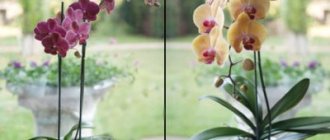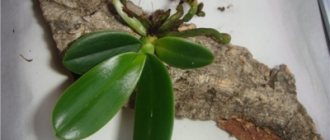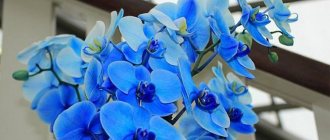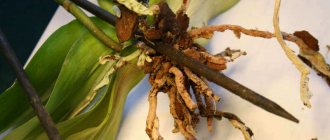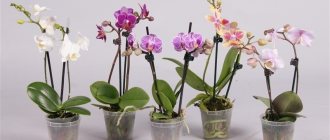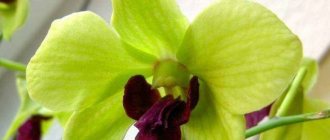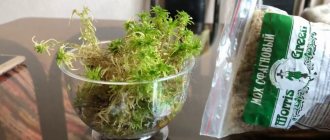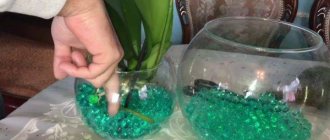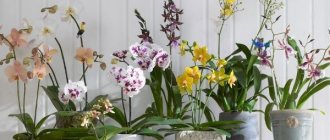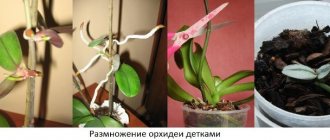Magnificent indoor flowers in pots give only a distant idea of the diversity of species in nature. Wild orchids are an excellent subject for studying biodiversity and the problems of its conservation. Conservation of endangered wild species is very important.
Representatives of the large botanical family Orchidaceae of the class of monocots are found on all continents except Antarctica and the northern polar regions. Herbaceous terrestrial perennials, woody vines, and epiphytes living on branches and trunks of tropical trees and shrubs predominate. A large number of species are found in warm countries, tropical and equatorial forests. Lignified orchids in nature, photos of which are presented in the article, reach 30 m in length and live up to 50–70 years.
Several species from different genera of the family live on rocks and rocky surfaces in the middle zone of mountains, for example, Angrecums are found at altitudes of up to 2000 m. Middle latitudes cannot “boast” of a large number of species, but representatives of the Orchidaceae family in the temperate zone are not inferior in beauty to their tropical "brothers". According to scientists, there are 30 thousand natural species of orchids and 5 times more cultivars and hybrids created under artificial conditions.
Orchids and man
The ancient Greek scientist Theophrastus called the orchis with paired thickened tubers “orchid,” which means “testicle-like.” The name stuck and was transferred to the entire botanical family. Exotics from Asia and South America conquered England at the beginning of the 19th century.
According to legend, gardener William Cattley planted a strange epiphytic plant in a tub and observed the appearance of large fragrant flowers on the shoots. In honor of the man who discovered wild orchids to Europeans, the Latin name of the genus Cattleya appeared. Cattleya labiata is the national flower of Brazil and is also revered in other South American countries. For its beauty and fragrance, cattleya is sometimes called the “queen of orchids.”
What Phalaenopsis Wild Cat looks like, description and photo
The aroma of the flower is light, barely perceptible, but its appearance leaves few people indifferent. To get a complete picture, it’s better to look at the Wildcat orchid in the photo.
Phalaenopsis is distinguished by rather dense spotted petals. The spots are located at a short distance from each other, so that, if viewed from a distance, the color may seem uniform.
The color of the spots is most often purple, burgundy, or dark pink. The bud itself is white or pale yellow, the lip is a little brighter, with yellowish stains. Due to the high wax content, the petals sparkle slightly in the light.
The length of the peduncle can reach half a meter, and up to 4 pieces can simultaneously develop on one plant. The buds are also large - up to 10 cm, with an expressive lip.
The leaves are wide and rounded, usually there are no more than eight. You can admire the Phalaenopsis Wild Cat in the photo below.
Unique creatures of nature
Millions of years of evolution have focused on the survival and interaction of plants with insect pollinators. Botanical scientists have found that the first orchids appeared on Earth at least 30 million years ago. A number of researchers claim that the pollen of these plants was found in rocks that are 80 million years old. When flowering plants occupied almost all ecological niches, orchids had to win their place in the hierarchy of relationships with other families. They resorted to a trick, luring pollinators away from more ancient angiosperms.
Everyone who has seen an orchid bloom in nature has enjoyed the magnificent spectacle. As botanists and ecologists note, some species imitate female bees, wasps, and butterflies, and use flower parts to retain pollinators. The result of adaptation to a certain type of insect was the joint evolution of plant and animal. The so-called specialization in orchids is narrowly focused and consists in complete dependence on a small number or a single pollinator.
Orchid blossom is an unforgettable sight
The unusual shape and unique coloring of the petals, spur, and perianth are all necessary to attract pollinators. The “lip” of orchids is a kind of “landing platform” onto which insects descend. The deeper a small animal climbs for nectar in the spur, the more plant pollen collects on the limbs, head and bristles of the body.
The structure of a flower in the form of a trap, the skillful repetition of the appearance of a female insect - only part of the tricks that plants resort to to deceive their pollinators. A wild orchid, a flower familiar to many inhabitants of the northern continents, is Lyubka bifolia. The flower arrow does not appear on this plant every year. Lyubka rests for one season after six years of seed production.
Dazzling living beauty
Orchids captivate with their grace and extraordinary tenderness. They are gradually replacing luxurious roses and other flowering plants. What makes home orchids so popular? Aristocratism, graceful silhouette, bright fragrant bouquets.
There are approximately 750 species of this flower. Their names are difficult to remember, but it is easy to highlight the most unusual and best of the best.
The Phalaenopsis orchid was studied by the botanist Blumen back in the 19th century. Their distinctive feature is a long stem with 4 fleshy leaves, and the inflorescences look like butterflies with velvety wings. In good conditions it can bloom 3 times a year.
This species has many varieties.
- Phalaenopsis Schiller has multi-colored leaves with a top coating. It can be distinguished by the large number of colors that gather on one branch. Sometimes there were 174 colors. Blooms 2-3 times a year.
- Amabilis is distinguished by large inflorescences that “sit” on winding branches. Up to 20 flowers grow on them, the diameter of which can reach 11 cm. The snow-white, yellow or pink-purple petals smell wonderful, which attracts flower growers.
- Stewart's Phalaenopsis has snow-white buds with reddish spots. This plant blooms in spring and autumn.
- Phalaenopsis Luddeman blooms at any time of the year, but most luxuriantly from December to March, and spreads an indescribable magical aroma around itself. Snow-white flowers cannot be confused with pink or yellow flowers.
- Pink, has a small peduncle with 15-20 snow-white pink flowers. But the elongated iridescent sepals, endowed with three lobes, have a transitional range from red to purple.
- The Sandera variety is the rarest and most expensive of the Phalaenopsis. The name is given by the surname of the gardener - Sander. The plant stands out with large peduncles looking down. They contain up to 50 flowers in diameter, reaching from 5 to 7 cm. Look at the photo.
- Phalaenopsis equina will suit fans of dark lilac and pink-purple colors.
- The giant one is distinguished by massive leaves reaching a length of up to 90 cm. The color of the flowers is milky cream, yellow and greenish-yellow, with protruding dark brown streaks. Due to the large size of the peduncle, it is difficult to keep at home, but for a greenhouse it is just right.
Reproduction of orchids in their natural habitat
The entire development cycle of representatives of the Orchidaceae family is tied to certain factors, which is why they are so vulnerable in nature. Most mother plants do not provide endosperm to the seeds. Once in the ground, they need the help of soil fungi. The influx of carbohydrates from the outside ensures germination and shoot development. There are types of orchids that have completely switched to symbiosis with fungi underground.
Vegetative propagation by aerial shoots and lateral shoots arising on thickened stems and peduncles is widespread. These small plants are called “baby orchids” by gardeners. In nature and indoor conditions, plants are capable of vegetative propagation by dividing an adult bush into two parts.
Classification of wild orchids
Depending on the way of life of orchids in natural conditions, they are classified into 3 groups:
- saprophytes;
- epiphytes;
- terrestrial species.
Saprophytes
Saprophytic phalaenopsis includes many species. Their main feature is that they do not have green leaves, like all the flowers we are used to. They have one shoot, which is covered with scales and at the end of which flowers form. Plants of this group have a powerful, developed root system, similar to coral. Separate roots do not emanate from the main rhizome; it nourishes the plant by absorbing moisture and microelements from humus necessary for life over its entire surface.
Epiphytes
Most existing orchid species belong to the group of epiphytic plants. They grow in tropical forests on trees, on rocks, and for normal life they need high humidity and air temperature. Their main difference is the ability to exist without soil, since their aerial roots and long creeping stems absorb sunlight and moisture from the environment (from dew, fog, rain).
Epiphytic plants have thin stems that are not able to stand upright on their own. Therefore, they mainly use trees as support. All absorbed nutrients accumulate in the fleshy leaves of flowers and their root tubers.
Only epiphytes are grown at home, and due to their characteristics and habitual habitat, they require special care. Care at home includes periodically moistening the plant and maintaining air humidity.
Terrestrial species
Terrestrial species grow on soil. These types of orchids are the most familiar to us, since they have ordinary green leaves and roots that grow in the ground. Their habitat is Europe and North America. In these areas, orchids grow to a maximum of 0.5 m, and in tropical zones - up to 1 m and higher, creating a bush with several peduncles.
Terrestrial species are accustomed to the change of seasons, because of this their life activity is divided into several periods - a period of active growth, flowering, reproduction and dormancy. In the summer, they form new storage lateral roots, called root cones. Throughout the winter they wait underground, and in the spring new stems grow from them.
Representatives of the Orchid family in the tropics and subtropics
The most diverse orchids are in Southeast Asia and Latin America - regions from where most species bred as indoor flower crops came to Europe. Great damage was caused to populations by excessive collection of exotic plants in tropical areas. The barbaric theft of orchids in places of natural distribution decreased after their introduction into culture and the appearance of hybrids.
New species continue to be discovered in hard-to-reach regions. So, in the early 1980s in China, scientists found hitherto unknown species of the Lady's slipper. Among tropical exotics there are many that are beneficial, for example Vanilla flatifolia. One of the most expensive spices in the world is obtained from the fruits of this orchid. The enchanting aroma of expensive chocolate, high-quality baked goods, and many perfume compositions is due to natural vanilla.
Orchids in European forests
On the territory of Russia, Belarus, and Ukraine, there are about 130 species that belong to the Orchidaceae family. These are representatives of two genera: Orchis and Slipper.
Almost all types of orchids in the countries of Eastern, Central and Western Europe are classified as rare, endangered and protected. The distribution in nature is decreasing due to habitat disturbance due to deforestation, grazing of livestock in meadows, and drainage of swamps. Harvesting for medicinal rhizomes and bouquets are also among the main reasons for the decline in the number of beautiful flowering plants.
Scientists have calculated that by 2050 in Europe the number of existing species will be reduced by exactly half.
The most common types with photos
Some flowers can be seen in forests and jungles. They attract with their beauty, so it is quite difficult to pass them by, especially during the flowering period. It is worth considering the most famous species, which are most often found in the natural environment.
Lyubka bifolia
This plant is also called night violet. It can be found in the Caucasus, Europe and Asia Minor. It refers to orchids. It has excellent decorative qualities, which is why it is often grown in gardens.
Peculiarities:
- reaches a height of 50 cm;
- a new replacement root appears every year;
- the plant has from one to three leaves, which are narrowed into a petiole (their size can reach 22 cm in length and 8 cm in width);
- inflorescences are an almost 20-centimeter spike with a large number of white buds;
- flowering from June to July.
Reference. This is an ornamental crop that is difficult to notice in its natural environment. Much more often it is present in summer cottages.
goodyer repens
This is an evergreen perennial with a creeping root listed in the Red Book. He is accustomed to a harsh climate, so he can often be found on Russian territory.
Description of culture:
- the rhizome consists of 5–12 elongated internodes;
- leaves are scale-like, collected in a rosette;
- stem 6 to 25 cm, fragile and round;
- the stem has small linear-lanceolate leaves;
- the inflorescence is a one-sided spike;
- the plant produces up to 30 small buds during the flowering period;
- the lip is without a spur and is strongly concave, with a small triangular nose at the end.
Important. This is an endangered species that is under special protection. It can only be found in nature reserves.
Lady's slipper
The flower has become widespread due to its unusual beauty. Its buds differ in color from other orchids. And outwardly it is difficult to mistake him for a classic representative of the family.
This is what this plant looks like:
- Leaves are green. They are typical, like any orchid. This means that their size can vary up to 50 cm in length. There are up to 5 leaves on the stem.
- The flowers look like a decorative shoe. They have different colors. Usually they are one color, but in some cases various inclusions are possible. It all depends on the growing conditions.
- The stem is short, about 20 cm, and often has a small fluff on it.
Important. The bud has a rather complex structure, which can become a trap for many insects that pollinate this flower. However, nature provided a small hole on the back of the shoe: there is no need to look for a way out, which would be a very difficult task.
After pollination, the flower begins to gradually fade.
Orchis spotted
And this is a medicinal plant that only vaguely resembles an orchid. It also grows in Russia. It can also be found in North and South America and Asia.
Main characteristics:
- perennial tuberous herbaceous plant;
- average stem height - 50 cm;
- on the crown you can find a thickening in the form of two tubers;
- leaves can be linear-lanceolate or broadly lanceolate;
- the buds are small, of various shades: from lilac-pink to dark cherry;
- the flowers are collected in spike-shaped inflorescences.
Reference. In most species of this plant, reproduction is possible only with the help of seeds. However, the orchis can also reproduce vegetatively, developing new tubers over time.
The nest is real
This representative of the Orchidaceae is considered a medicinal herb. It can be found in most of Europe, Western Siberia, Asia and the Caucasus. Also grows in some regions of Spain. The flower loves shady forests and bushes, where it hides well. It can be found on rotting stumps and tree roots.
Features of culture:
- stem yellow-brown;
- the inflorescence is remote and rather dense;
- stem height can reach 40 cm;
- leaves are scale-like, strongly pressed to the stem;
- the plant may have 4–6 leaves;
- the flowers are located on short stalks and emit the smell of honey.
The flower is often used to prepare various medicines and is also used in folk medicine.
Russia is home to northern orchids
The famous Bryansk forests - the pride of Russia - are the habitat of 22 species of wild orchids. This part of the range is dominated by beautiful and rare plants (lady's slipper, dormant orchis, neottiana capulata, hiding place, nesting plant, neottiana, lady's slipper, Lyubka bifolia and others).
Wild orchids are protected by law in Russia; nature reserves and sanctuaries have been created to preserve and increase the number of rare plants. 8 species of plants from the Orchid family are listed in the Red Book of Russia:
- Gastrodia is high.
- Liparis Lezel.
- Neottiana capulata.
- Palmate roots - P. baltic and P. trifolia.
- Dormant orchis and two more species - I. burnt and I. three-toothed.
Problems of preserving orchids in nature
Flowers in the forest, near a pond, on a mountain or dry steppe slope differ in their adaptations to their habitat. Orchids in nature are great at surviving in jungle and taiga conditions, but the ecological plasticity of plants is limited. Unfortunately, lady's slipper and orchis are on the verge of extinction. In most countries, wild orchids are preserved in nature reserves, botanical reserves, and in national parks where environmental management is limited.
Ecologists and employees of botanical gardens of the Russian Federation have proposed a way out of the current situation with the protection of rare plants. They can be transplanted from places where intensive land development and economic activity is carried out into suitable protected natural areas.
